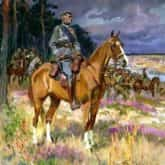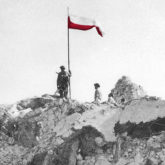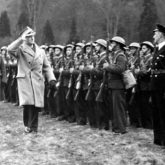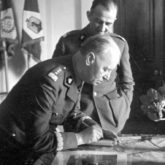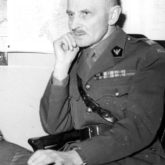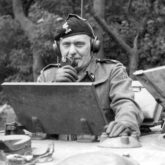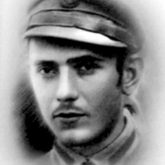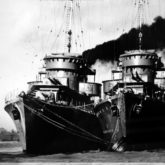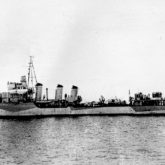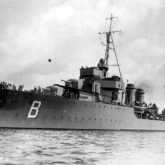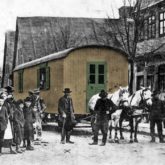„Od Kłajpedy do Szczecina” (From Klaipeda to Szczecin) – a Polish military song from the Second World War. The words and music were written by Adam Kowalski [1], a composer and Polish Army officer. It was first published in 1941 in Scotland. The text of the song was addressed to the sailors and soldiers of the Polish Navy. Polish ships evacuated to the West at the end of August and in September 1939 immediately entered combat on the side of the Allies. They also became the nucleus of the rebirth of the Polish Armed Forces. Destroyers and submarines of the Polish Navy fought in the North Sea, in the defence of Norway, in the great campaign for control over the North Atlantic and in the protection of convoys to the Soviet Union, in the battles in the Mediterranean Sea and in the Allied invasion of Western Europe. The participation of the Polish destroyer ORP Piorun in the pursuit of the German battleship Bismarck has passed into legend. In addition to warships, ships of the Polish Merchant Navy also served on the side of the Allies, taking part in all major landing and transport operations against Germany and Italy.
From Klaipeda to Szczecin
Music and lyrics: Adam Kowalski
Song description
Title: From Klaipeda to Szczecin
Music and lyrics: Adam Kowalski
Historical note
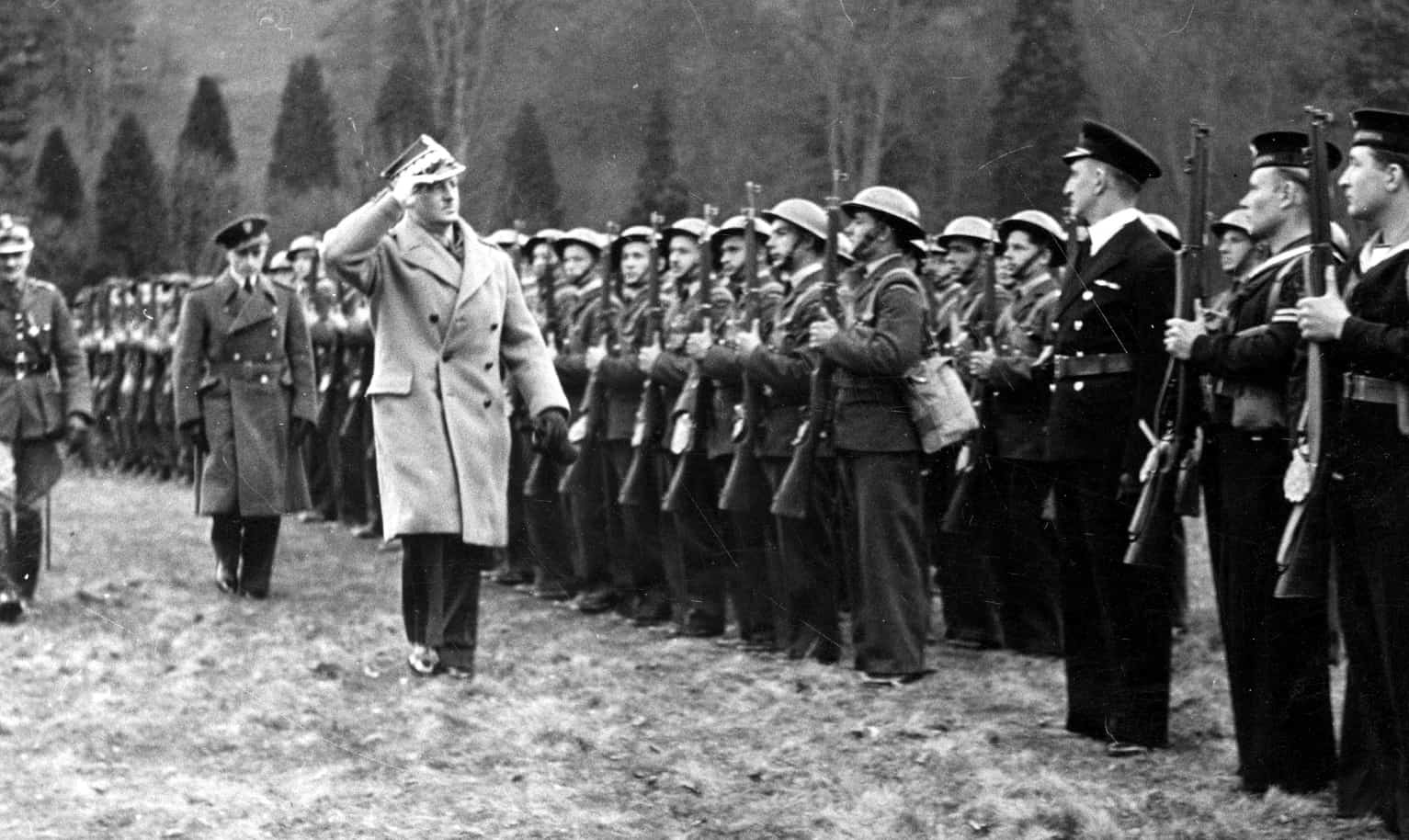
Adam Kowalski’s educational and compositional activity was connected with the Polish Armed Forces which evacuated to England after the fall of France in June 1940. On 28 September 1940, by order of Commander-in-Chief General Władysław Sikorski [2], the Polish First Corps [3] was formed there. It was deployed in Scotland, with its command located in Edinburgh. The first commander was General Marian Kukiel [4]. After absorbing reinforcements from General Anders’ Army in 1942, the unit was renamed I Armoured and Motor Corps. It was formed by the 1st Armoured Division and the 1st Independent Rifle Brigade.
In 1944, both units were transferred under British command and replaced by the 4th Infantry Division and the 16th Independent Armoured Brigade. They were formed mainly from Wehrmacht prisoners of war – Poles from lands incorporated directly into the Reich which were forcibly conscripted into the army. However, these units did not take part in frontline combat. The last commander of I Corps after the end of hostilities in Europe was General Stanisław Maczek [5]. In March 1946, the Polish Resettlement Corps (Polski Korpus Przysposobienia i Rozmieszczenia) was formed basing on I Corps units and other formations of the Polish Armed Forces in the West (Polskie Siły Zbrojne na Zachodzie, or PSZ). Its task was to serve help to soldiers returning to Poland, emigrating to other countries or wishing to stay in the United Kingdom. The Corps existed until 1949.
Throughout the war, the Polish Navy was the most active formation of the Polish Armed Forces in western Europe. Destroyers „Burza”, „Blyskawica” and „Grom” were the first to get into the action. Evacuated to the UK in the last days of August 1939 („Operation Peking”), they began active service already in September of the same year. „Blyskawica” sailed to Romania on 18 September escorting a ship with war material for Poland. The voyage was interrupted on 22 September after receiving information about Soviet aggression and the sudden deterioration of the situation in the country. Towards the end of the year, the Polish destroyers were transferred to the North Sea for service as part of the 22nd and later, the 1st Destroyer Flotilla. The PMW’s inventory gradually increased. The submarines „Orzeł” and „Wilk” also made their way to England in 1939. In May 1940, the Polish flag was raised by the destroyer „Garland”. ORP „Orzeł” sank the German transport ship „Rio de Janeiro” on 8 April, which constituted one of the first signals of the German invasion of Norway.
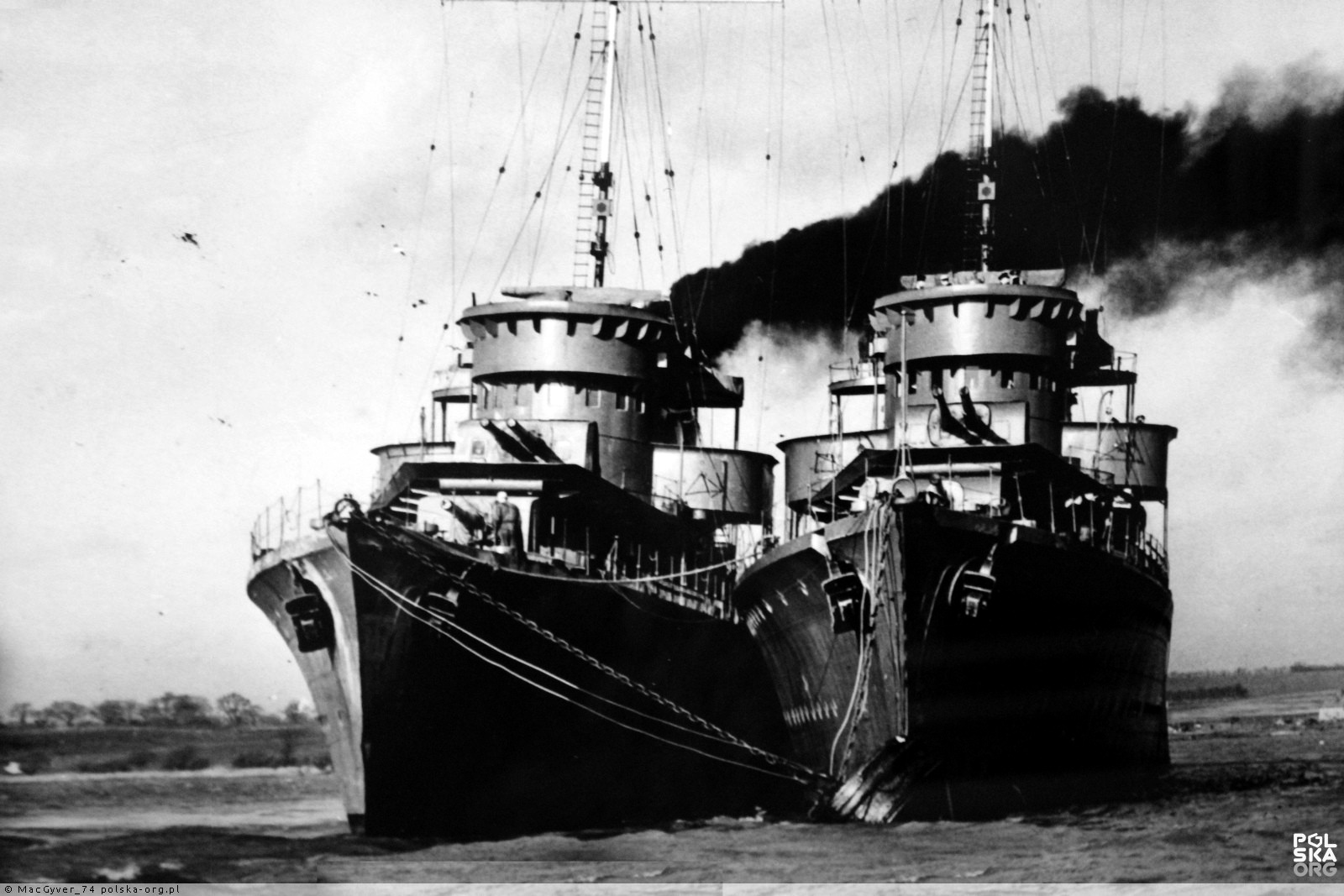
On 19 April, „Burza”, „Błyskawica” and „Grom” were directed to Narvik. Their mission was to cover and support the Allied expeditionary troops, including the Polish Independent Highland Rifle Brigade. Damaged by a heavy storm, „Burza” had to turn back, but the other destroyers took an active part in the fighting. On 4 May, in the Rombakken fjord, ORP „Grom” was sunk by a German bomber. The second, equally painful loss was the loss of the „Orzeł” in late May/early June during a combat patrol in the North Sea. After the fall of Norway, „Burza” and „Błyskawica” patrolled the English Channel in support of British troops pinned down by the Germans on the coast near Calaise. On 24 May, „Burza” was damaged by German aircraft and had to return to Dover. Two days later, „Blyskawica”, now just on its own, joined Operation Dynamo – the evacuation of the British Expeditionary Corps and French troops from Dunkirk. On 2 June, the Polish destroyer returned to Harvich. At the same time, the submarine ORP „Wilk” conducted patrols in the North Sea. It served there until January 1941, when, due to wear and tear of its mechanical circuits, it was transferred to training duties. The youngest destroyer in the Polish fleet, the destroyer „Garland” served until September 1940 in the Mediterranean Sea, after which it was redeployed to the Atlantic. On 4 November 1940, the Polish Navy received the new destroyer „Nerrisa” in exchange for the „Grom”, lost in Norway. She was renamed ORP „Piorun”. After training the crew, she was immediately sent to the Atlantic, where one of the most important battles of the Second World War took place – the fight for supply routes from the USA to the UK.
Text analysis
The text of „Od Kłajpedy do Szczecina” consists of four stanzas. Its content indicates that it was addressed mainly to the sailors and soldiers of the Polish Navy [6]. On the one hand, it is a reminder of the Polish Navy’s previous combat route and battles in defence of the Motherland, while on the other it is a manifesto of plans to regain Polish access to the Baltic Sea. The first stanza is a call to fight for victory for which „the Polish people are waiting”. Gdańsk and Gdynia, main ports of the First and Second Polish Republics, are mentioned in this respect. It is worth mentioning that it was exactly in year 1941, at the height of German success in the war, that the Polish notion (supported mainly by politicians of the national movement) of a post-war incorporation of the main port for the Odra trade – Szczecin – and the ports that were once part of the First Polish Republic – including, among others, Klaipeda – emerged. Second stanza is a repetition of the call to ruthless battle („German blood is foaming”) and a testimony of faith in the divine assistance („God throws thunders”). Third stanza is a repetition of the idea for the reconstruction programme, which, in addition to the previously mentioned cities, includes this time Königsberg, the main port of Duchy of Prussia (or, Ducal Prussia) [7], a former fief of the Polish kings. The incorporation of this city, together with the whole region of East Prussia, was during the war part of the official programme of the political forces forming the Polish Government in Exile [8]. The final stanza is a vision of final victory, of a parade (“roses in the barrels of the guns”), and a commemoration of the 1939 defenders of Hel peninsula and Westerplatte outpost. The song ends with the assurance that what we regain we will never let go of again.
Compiled by Piotr Pacak
Endnotes
[1] Adam Kowalski (1896-1947) – Polish Army officer, composer and journalist. Author of approximately two hundred Polish military songs and chants. From 1914 soldier of the Polish Legions fighting against Russia at the side of Austria-Hungary. In 1918, he joined the Polish Army. He was active in the field of soldier education. He founded the Soldiers’ University in Grodno. He edited the biweekly „Reduta” and was editor-in-chief of the „Polish Soldier” („Żołnierz Polski”). From 1933, he was transferred to the Military Institute of Science and Education in Warsaw. In 1939, he was interned in Romania, from which he escaped to France, and after its fall evacuated to Great Britain. He died in Edinburgh in 1947. Adam Kowalski’s work at the Polona Library, Wikipedia entry
[2] Władysław Sikorski (1881-1943), Polish military officer and politician, Lieutenant General of the Polish Army, Prime Minister and Minister of Military Affairs of the Second Republic, Commander-in-Chief of the Polish Armed Forces (PSZ) and Prime Minister of the Polish Government in Exile during World War II. Wikipedia entry.
[3] 1st Polish Corps in the West (PSZ) – a higher tactical unit of the Polish Armed Forces in the years 1940-47. Wikipedia entry.
[4] Marian Kukiel (1885-1973), Major General of the Polish Armed Forces, military historian, social activist, politician, deputy chairman of the Committee of Ministers for National Affairs from 8 November 1939, member of the Historical Society in Lviv. Wikipedia entry.
[5] Stanisław Maczek (1892 – 1994), General of the Polish Army, a certified officer, military commander, considered to be a Polish precursor of armoured weaponry units. Knight of the Order of the White Eagle, honorary citizen of the Netherlands. Promoted on November 11th 1990 by the President of the Polish Republic in exile to the rank of Lieutenant General. Wikipedia entry. Film on General Maczek from the collection of the Polish History Museum.
[6] Polish Navy in the Second World War: Wikipedia entry. Article on polskieradio.pl webpage. Polish Navy in the Second World War – a discussion at the Institute of National Remembrance (IPN).
[7] Duchy of Prussia, also Ducal Prussia – a state created after the secularisation of the Teutonic Order state in Prussia, on the basis of the Treaty of Cracow in 1525, concluded between Sigismund I the Old and his nephew Albrecht Hohenzollern. It remained a fief of the Kingdom of Poland until 1657. Wikipedia entry.
[8] Polish Government in Exile – the government of the Republic of Poland, existing in the years 1939-1990, being the legal continuation of the authorities of the Second Republic which were forced to leave Poland after the aggression of the Third Reich and the USSR against it in September 1939, and the occupation of the entire Polish territory by the aggressors. The seat of government was initially Paris, later Angers (on an extraterritorial basis) and, from the end of June 1940 (the capitulation of France), London. Until 5 July 1945, it was widely recognised internationally (with the exception of the USSR and the Third Reich and its allies) as the only legal government of Poland; after that date, it lost its status as a subject of international law, but continued to function nonetheless, until the first general presidential elections in Poland in 1990. Wikipedia entry. Digitized Archive in the collection of the Sikorski Institute.
Gallery
Links
- ORP Orzeł - "ORP Orzeł - Chluba Polskiej Marynarki Wojennej" - radio broadcast. Source: Radio Poland
- ORP Błyskawica - "ORP Błyskawica 1937-1946" - article. Source: Wiek Dwudziesty (Twentieth Century)
- ORP Błyskawica - "1000 miejsc w Polsce, które musisz zobaczyć - ORP Błyskawica" - video. Source: YouTube - FokusTv channel
- ORP Grom - "II wojna światowa. Niszczyciel ORP Grom - video. Source: YouTube - Nieznane oblicza II wojny światowej channel
- ORP Garland - "Waleczny ORP Garland 1940-1941" - article. Source: Magnum X
- ORP Piorun - "ORP "Piorun" - article. Source: PolskieRadio.pl
 Strona dostępna w języku polskim
Strona dostępna w języku polskim  Website disponível em português
Website disponível em português 